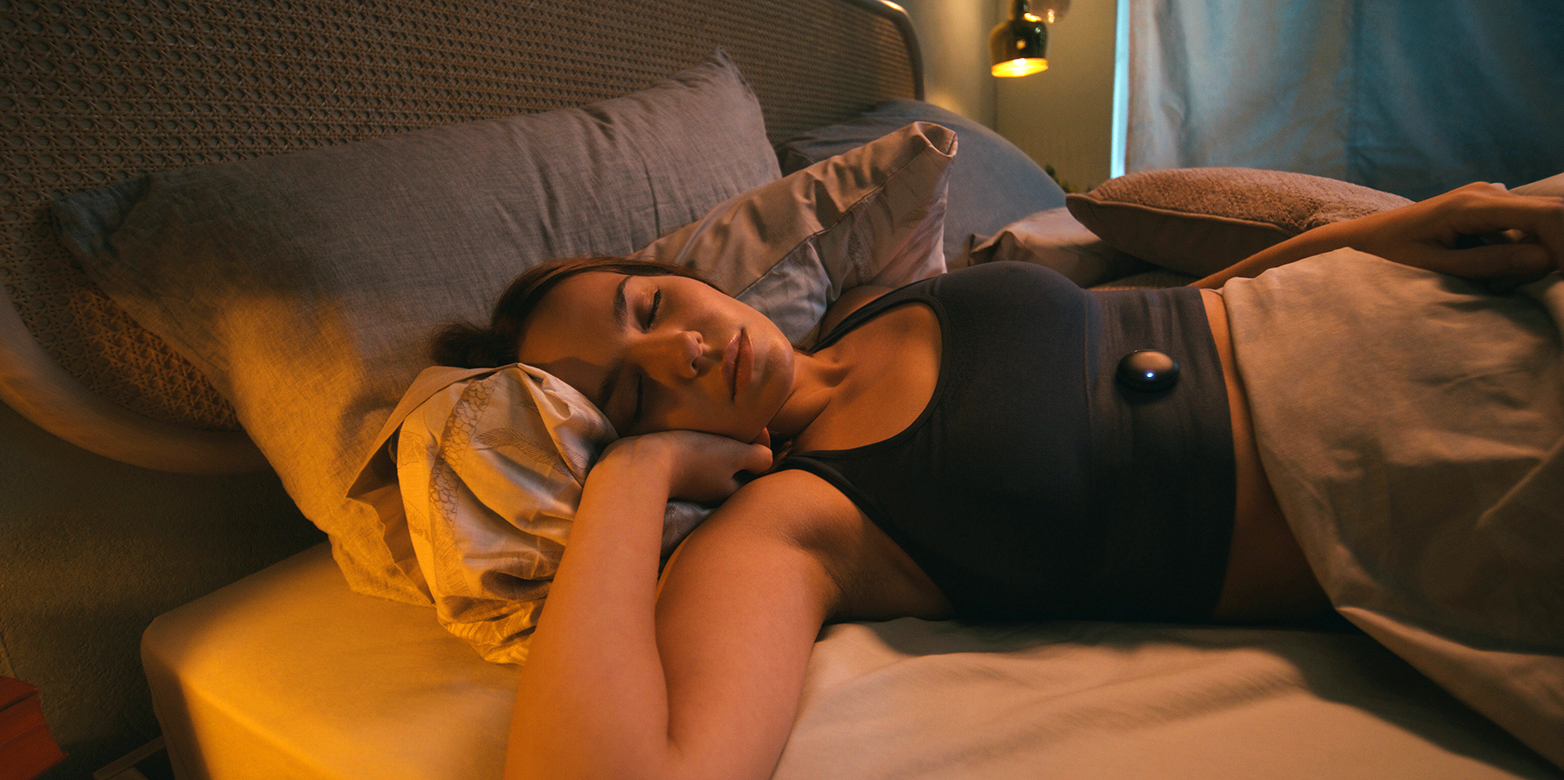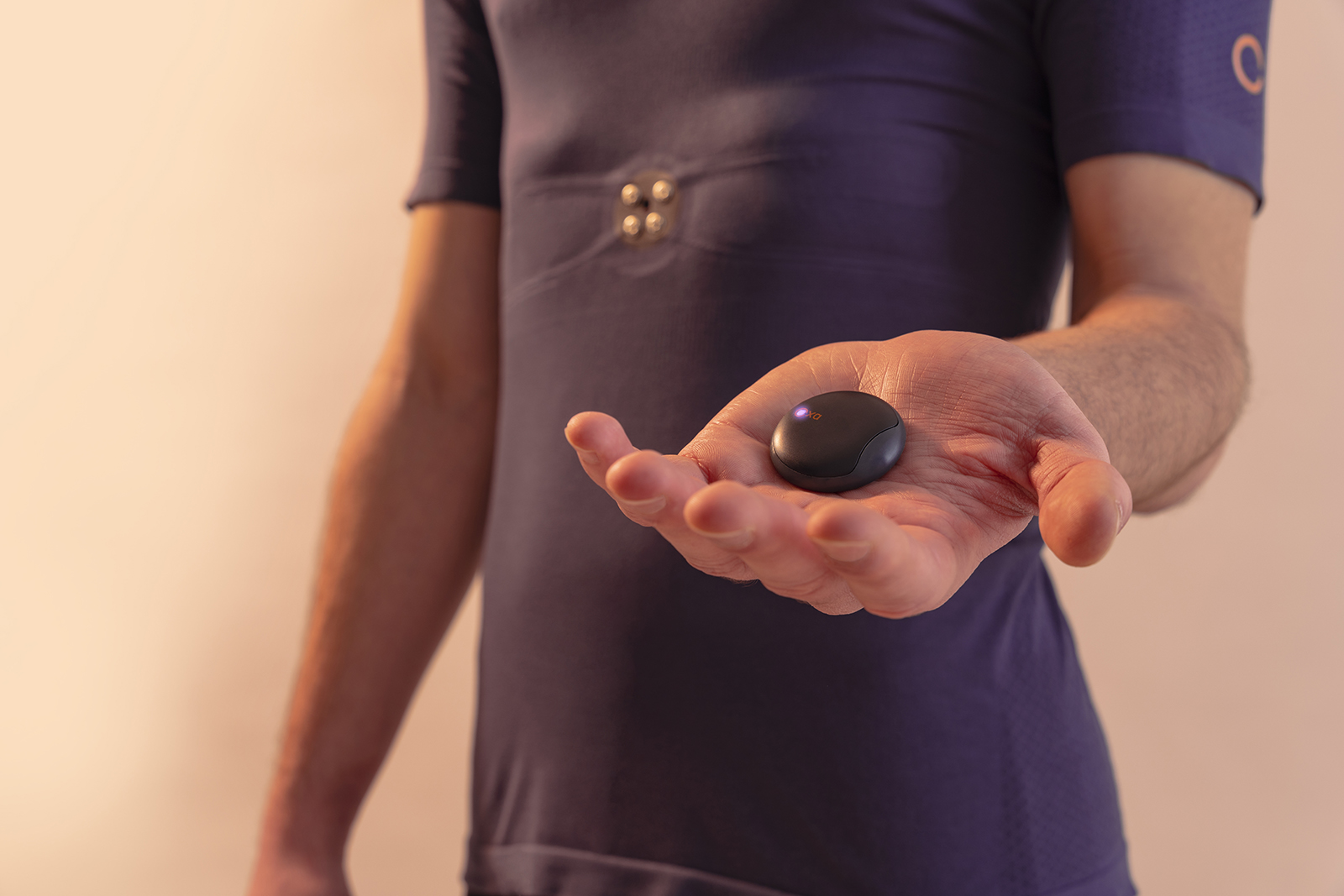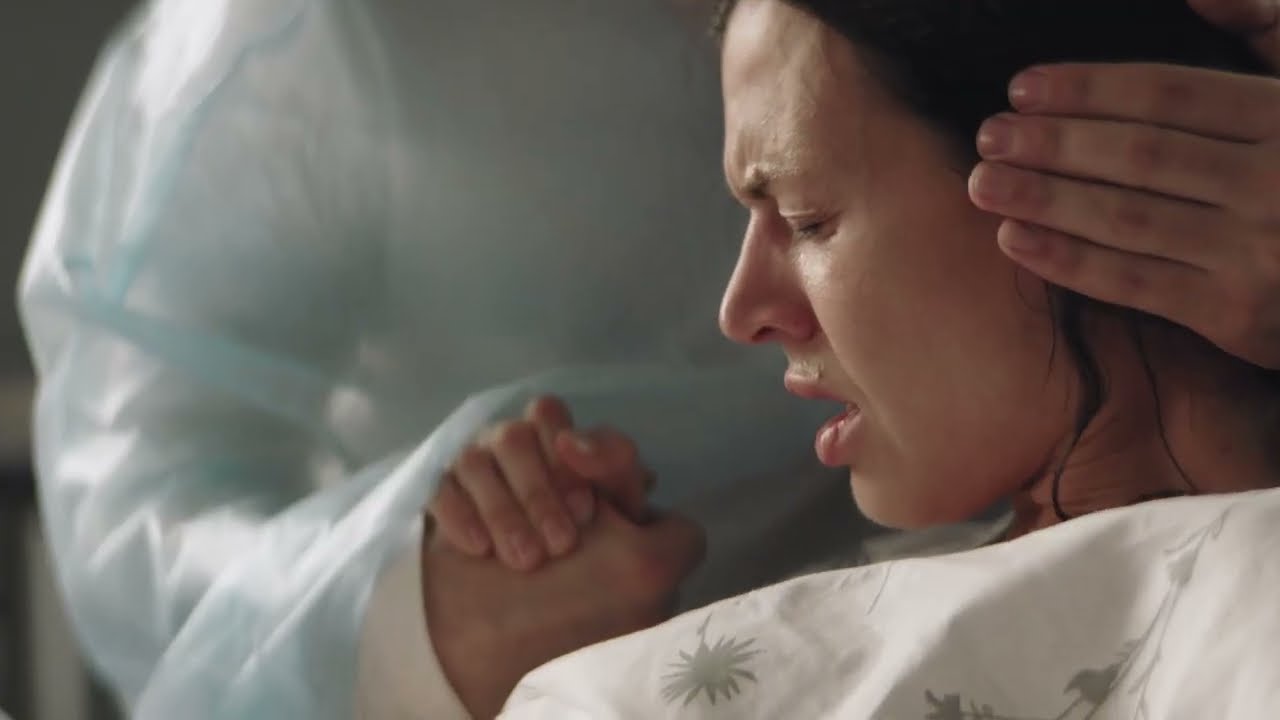Reduce your stress
Breathing and heart activity reveal something about our stress levels. No smartwatch can measure stress and breathing activity in real-time, but Oxa, the new product from ETH Spin-off Nanoleq does exactly that.

Keeping an eye on heart rate, sleep patterns or steps taken is ‘en vogue’. However, not all devices provide accurate data, and none suggest breathing exercises for health improvements. “Oxa is much more than a tracker,” says Vincent Martinez, CEO of ETH spin-off Nanoleq. Oxa consists of a sensor, a garment, and an app. It measures breathing depth, breathing rate, heart rate, heart rate variability (HRV) and estimates the stress level. This biofeedback helps wearers to improve their lifestyle and, essentially, their health.
Vital sign monitoring
The sensor is a pebble-sized device with four state-of-the-art sensors which capture biofeedback with ultimate precision. The garment is an eco-friendly, comfortable lounge shirt or bra with incorporated e-textile components. The sensor connects easily to the shirt or bra, transmitting the data via Bluetooth in real-time to the app.
“Oxa is much more precise than any smartwatch or fitness tracker because it measures the heart rate electrically rather than optically”Vincent Martinez, CEO Nanoleq
But what is the difference between Oxa and a smartwatch? “Oxa is much more precise than any smartwatch or fitness tracker because it measures the heart rate electrically rather than optically” explains Vincent. A smartwatch only shows the average heart rate which is not sufficient to suggest health improvement exercises.
Oxa, however, relies on sensing principles trusted by doctors. Breathing is measured based on respiratory inductance plethysmography (RIP); a measurement used by doctors to estimate sleep apnea. It also delivers an ECG from which live heart rate and HRV can be derived. HRV helps to determine the stress level. At high stress, e.g., when running a marathon or high mental stress, the HRV is low, and in a relaxed state, the HRV is high. The app displays these figures in real-time and analyses the data and responds to the wearers’ breathing and emotions.

Why measure the breath rate?
“Breathing is the only vital sign we can control to influence how we feel”, explains Vincent. Anyone who practises yoga knows the importance of breathing techniques and how they can influence your well-being. The Oxa app alerts and guides or rewards with musical and visual feedback to notify the users of their stress levels in real-time and keep them engaged. Vincent adds: “We developed the breathing exercises with pulmonologists, yogis, and breathwork instructors. If executed and followed, the exercises can reduce stress and improve health.”
As a next step, Nanoleq will introduce sleep monitoring in 2023. Oxa will detect breathing irregularities during sleep and recommend suitable breathing exercises to do before you go to sleep. “Some breathing exercises in Oxa help to increase the HRV up to 50%, and therefore substantially help with sleep recovery,” promises Vincent.
“Some breathing exercises in Oxa help to increase the heart rate variability up to 50%, and therefore substantially help with sleep recovery.”Vincent Martinez, CEO Nanoleq
Oxa is targeted at individuals and businesses. Anybody with stress and sleep issues can benefit. Likewise, Nanoleq sees a lot of potential for private clinics, insurance companies, corporates (mental health of employees), and doctors.
Stretchable electronics from ETH
Nanoleq was founded five years ago and has already various smart textiles such as work wear and medical wear on the market. These applications either help protect workers or support patients’ recovery. Nanoleq reckons that the smart textile market will grow 30% between now and 2027, largely because people wish to manage their health.
The technology supporting the wearables are stretchable wires and dry electrodes – Nanoleq’s patented invention “bodyGuard”. bodyGuard is the material innovation behind Oxa and Nanoleq’s other products consisting of PhantomTape (stretchable wires) and ElectroSkin (dry electrodes, i.e., no need to wet or apply gel on the surface). The products are highly washable, comfortable and easy to integrate for textile manufacturers. “bodyGuard is the Gore-Tex of smart textiles”, states Vincent, “it can be used for many different applications”.
Oxa is certified for the EU, the US, and Canada, but their smart components are available everywhere. Nanoleq has just launched Oxa via a kickstart programme and is keen to talk to anyone interested in improving their employee’s or patients’ well-being.

Contact/Links:
external pageOxa | Your Breathing Wearable
Do you want to get more "News for Industry" stories?
external pageFollow us on LinkedIn
Are you looking for research partners at ETH Zurich?
Contact ETH Industry Relations
ETH spin-offs: facts and figures
Since 1973, 540 spin-offs have been founded at ETH Zurich. ETH transfer, the technology transfer office at ETH Zurich, supports recognized ETH spin-offs in the founding process and in their first years of operation.
With the help of the Pioneer Fellowship Programme, funded by the ETH Foundation, young researchers can develop innovative products and services based on their scientific work at ETH Zurich. A Pioneer Fellowship is awarded to young ETH entrepreneurial minds intending to develop a highly innovative product or service to be exploited commercially and/or for the benefit of society.
Offers for entrepreneurs at ETH
Press release ETH spin-offs January 2023: Digital twins, new cancer treatments and three unicorns

